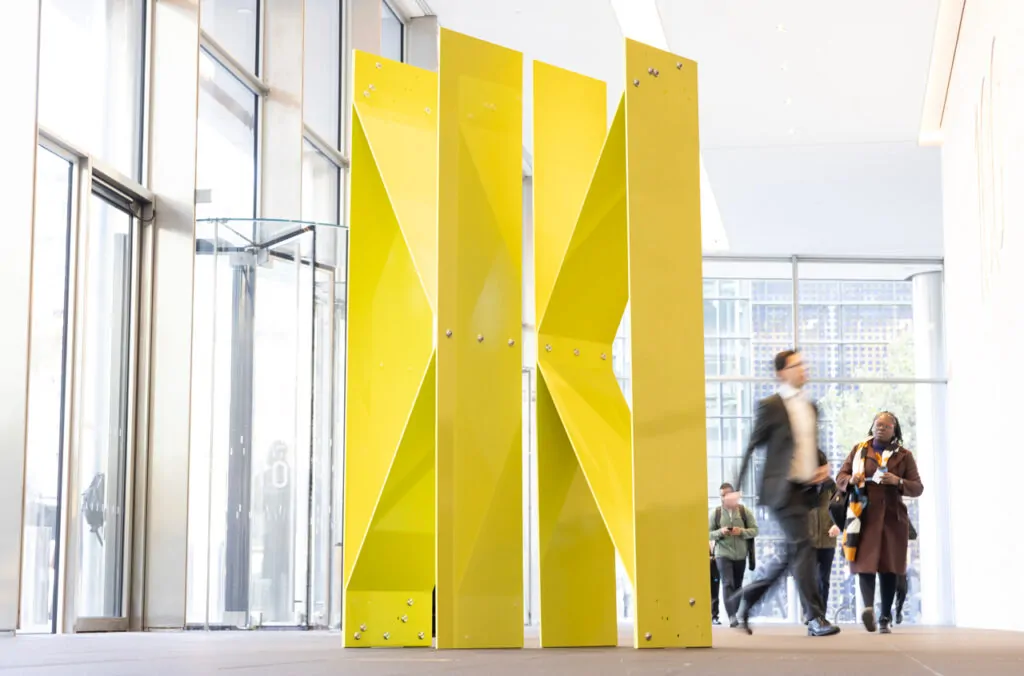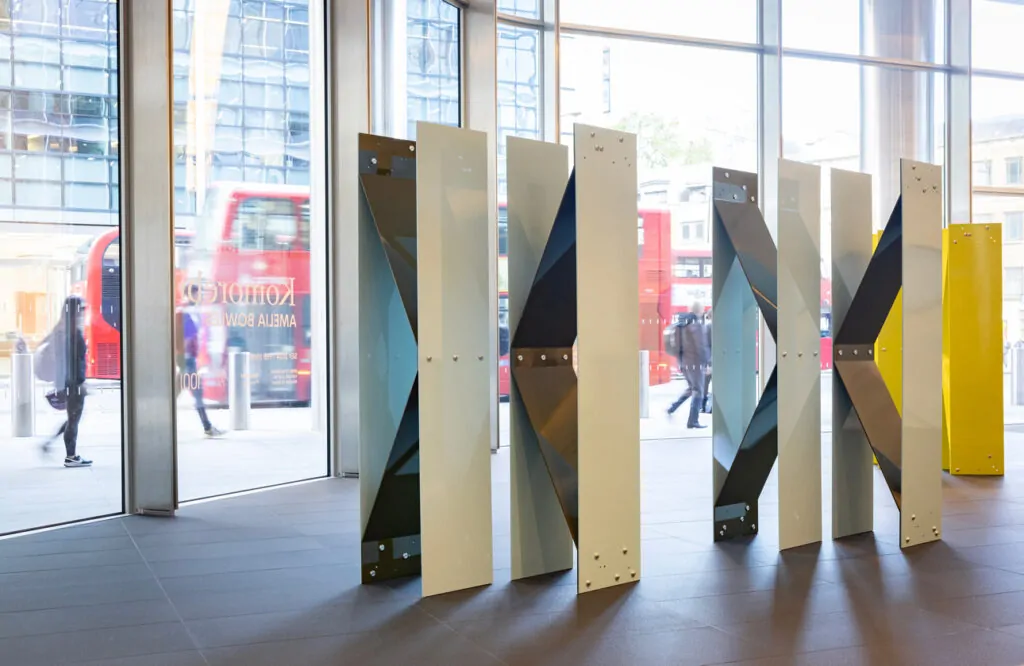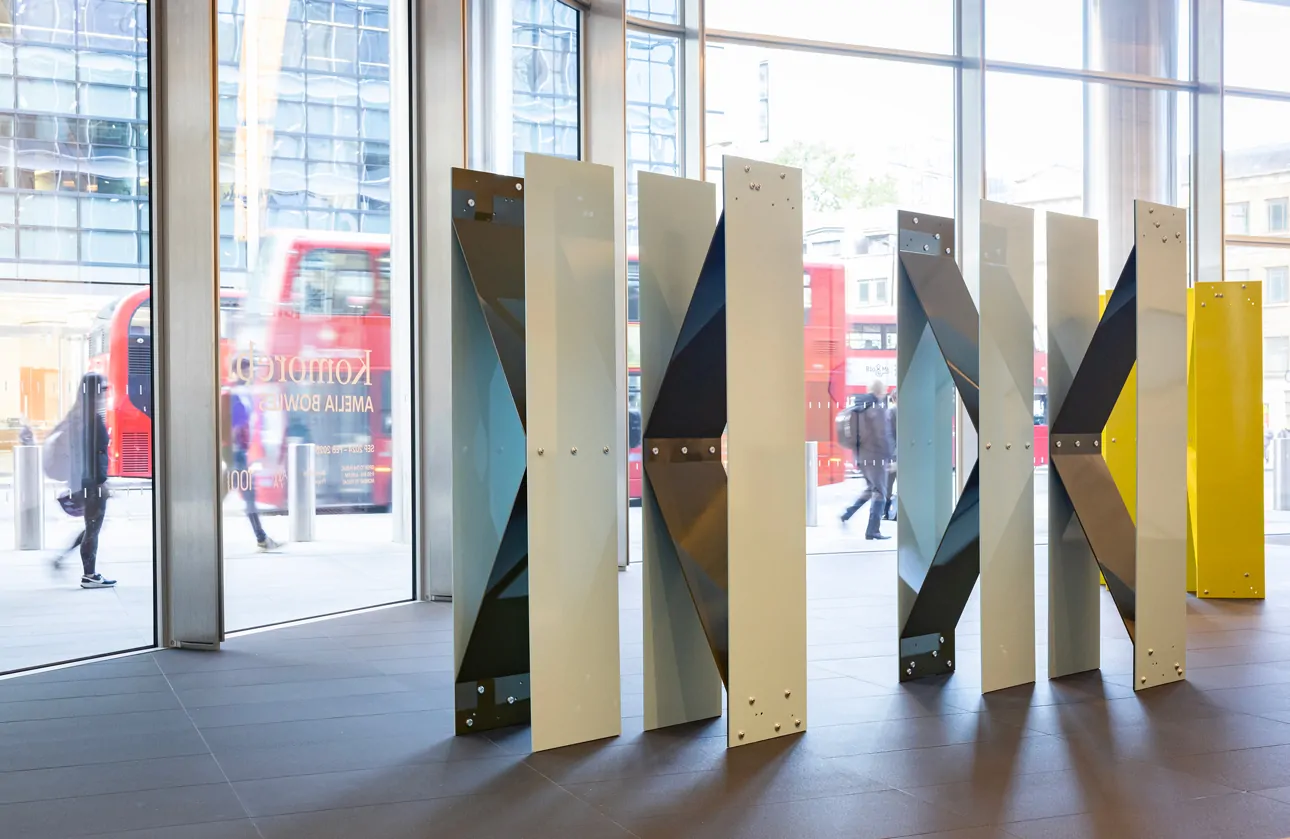This September, the entrance hall of 100 Bishopsgate will be transformed by environment-responsive sculptures by artist Amelia Bowles, whose colours and shadows energetically reflect and adapt to light and surroundings. Presented by Brookfield Properties, in partnership with AWITA (Association of Women in the Arts), Bowles’ new installation ‘Komorebi’, is a response to the fast-paced and ever-changing cityscape of London, offering viewers perspectives and an experience that bridges the exterior and interior and explores the relationship between space, mass and materiality.

Credit Matt Alexander, PA Wire
The partnership initiative – entitled ‘Beyond the Matrix’ – is the second showcase co-created by Brookfield Properties and AWITA and signifies their continued commitment to the visual arts and supporting the work and labour of female creatives. The commissions were selected by a panel of experts and the first pairing starred artist Jodie Carey and curator Eve Miller (of Edel Assanti gallery). This second pairing has gifted artist Amelia Bowles a new platform to show newly commissioned and conceived, site-specific artworks in collaboration with curator Millie Jason Foster, Director of Gillian Jason Gallery.
A matrix describes a flow of energy. Curator Millie Jason Foster therefore proposed a series of sculptures by Amelia that will record the continuous flow of energy that passes back and forth through the entrance hall of 100 Bishopsgate. The sculptures adapt and are never static, their in-between states are highly responsive to their surroundings. As visitors walk around the sculptures the works will compress and release, this interaction, between the sculptures and people in the building that walk past them, invites the necessity for exchange. When thinking about the connections between passing bodies, light becomes an important part of the work.

100 Bishopsagte
Credit Matt Alexander, PA Wire
“I am interested in the possibility that the experience of the different degrees and temperatures of light, shadow and colour can cause biological and cognitive shifts. Neurobiological research states that the experience of varying degrees of light and shadow positively impacts the circadian rhythm functioning (our body clock). What interests me is this internal system regulates our mood and wellbeing, therefore affecting the way we perceive and interact with the world around us.” – Amelia Bowles, Artist.
Amelia Bowles is known for her site-specific installations that engage with their environment, creating immersive and interactive experiences. Her works often explore the relationship between natural phenomena and urban spaces, inviting viewers to reflect on their surroundings and the impact of light and colour on their emotional well-being. ‘Komorebi’ is a direct response to the architectural nuances of 100 Bishopsgate. The installation explores the entrance hall as a permeable space, connecting the outside hustle with the architecture and interiors of the impressive building.

Inspired by the natural phenomenon of ‘Komorebi’, which describes sunlight filtering through the leaves of trees, Bowles’ sculptures weave light and shadow through flowing bands, creating rhythmic shifts that mimic the calming effect of sunlight in a forest. Neurobiological research highlights that such patterns can reduce stress and improve cognitive performance – a theme Bowles integrates into her work to offer contemplative relief from the daily grind. Bowles’ use of colour personifies the temperature of sunlight at different times of day, with hues of yellow, blue, and pink inviting new encounters and perspectives. The repeated motif throughout the site evolves, presenting a familiar structure in an ever-changing palette.
The judging panel for Beyond the Matrix were Helen Pheby, Associate Director, Programme at Yorkshire Sculpture Park, artists Jane and Louise Wilson of Nancy Durrant, Culture Editor of the Evening Standard, Sigrid Kirk, Co-Founder AWITA and Saff Williams, Curatorial Director Brookfield Properties Europe. They chose work that responds to the geometries of the architecture and the matrices of the building as a public realm and site for new connections. 100 Bishopsgate is one of the many premier real estate properties developed and managed by Brookfield Properties in the City of London.
The Matrix was selected as a curatorial narrative since it has a long-standing feminist legacy in the city from the 80s when the London-based feminist architects’ practice Matrix was one of the first worldwide to bring issues of gender centre-stage to the design of the built environment. Building upon this legacy, the Matrix thus becomes the imaginary place where cultural innovation happens, and 100 Bishopsgate is the space where everybody is welcome to experience and connect with it.
By placing art within the lobby of shared-use work spaces, Brookfield Properties celebrates the office space as alternative galleries, giving workers and visitors a moment for looking and a reminder to pause – if only for a moment. At the same time, creatives are presented with dynamic new platforms to respond to.
Amelia Bowles’ ‘Komorebi’ sculptures are on view at 100 Bishopsgate until February 2025.
©2024 Amelia Bowles





